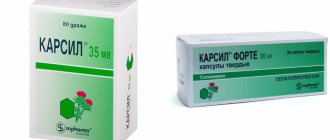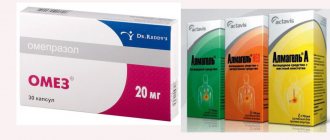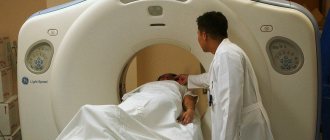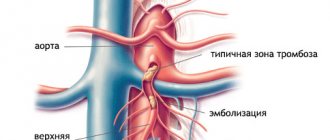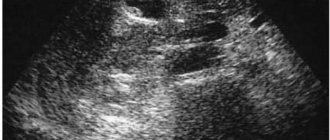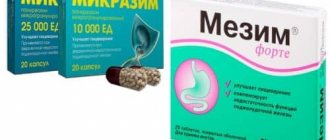Home | About us | Delivery | Advertisers | Login | Registration
Delivery on Sundays and holidays does not work!
- Medicines
- dietary supplementsVitamins
- Categories from A to Z
- Brands from A to Z
- Products from A to Z
- Medical equipment
- beauty
- Child
- Care
- Honey products appointments
- Herbs and herbal teas
- Medical nutrition
- Journey
- Making medicinesStock
Pharmacy online is the best pharmacy in Almaty, delivering medicines to Almaty. An online pharmacy or online pharmacy provides the following types of services: delivery of medicines, medicines to your home. Online pharmacy Almaty or online pharmacy Almaty delivers medicines to your home, as well as home delivery of medicines in Almaty.
my basket
Apteka84.kz is an online pharmacy that offers its customers medicines, medicinal and decorative cosmetics, dietary supplements, vitamins, baby food, intimate products for adults, medical equipment and thousands of other medical and cosmetic products at low prices. All data presented on the Apteka84.kz website is for informational purposes only and is not a substitute for professional medical care. Apteka84.kz strongly recommends that you carefully read the instructions for use contained in each package of medicines and other products. If you currently have any symptoms of the disease, you should seek help from a doctor. You should always tell your doctor or pharmacist about all the medicines you take. If you feel you need further help, please consult your local pharmacist or contact our GP online or by telephone.
© 2022 Pharmacy 84.
Pilobact®
Clarithromycin
When used simultaneously with astemizole, cisapride, pimozide, terfenadine, an increase in the concentration of the latter in the blood was reported, which can lead to cardiac arrhythmias (prolongation of the QT interval on the electrocardiogram, ventricular tachycardia, ventricular fibrillation, torsade de pointes). Concomitant use of clarithromycin with astemizole. cisapride, pimozide, terfenadine are contraindicated.
The simultaneous use of clarithromycin and ergotamine or dihydroergotamine (ergot alkaloids) can lead to acute ergotamine intoxication, accompanied by severe peripheral vasospasm (impaired sensitivity, paresthesia, pain and a marked decrease in pulsation in the extremities, disorders of the central nervous system - dizziness, convulsions, coma). Concomitant use of clarithromycin with ergot alkaloids is contraindicated. Caution should be exercised when using clarithromycin concomitantly with ototoxic drugs, primarily aminoglycosides, due to increased ototoxicity. During and after treatment, the function of the hearing organ and vestibular apparatus should be monitored. Concomitant use of zidovudine in HIV-infected adult patients may result in decreased steady-state zidovudine concentrations. Since clarithromycin affects the absorption of concomitantly administered oral zidovudine, it is recommended that these drugs be taken at least 4 hours apart.
Concomitant use of clarithromycin and digoxin
Digoxin is suspected to be a Pgp substrate. Clarithromycin is known to inhibit Pgp. When clarithromycin and digoxin are used together, inhibition of Pgp by clarithromycin may result in increased effects of digoxin. Post-marketing studies have shown that coadministration of digoxin and clarithromycin may also result in increased serum concentrations of digoxin. Some patients have experienced clinical symptoms of digoxin toxicity, including potentially fatal arrhythmias. Serum digoxin concentrations should be carefully monitored when clarithromycin and digoxin are coadministered.
Interactions caused by
CYP3A CYP3A4
isoenzyme (for example, rifampicin, phenytoin, carbamazepine, phenobarbital, St. John's wort) can induce the metabolism of clarithromycin . This may result in subtherapeutic concentrations of clarithromycin, resulting in reduced effectiveness. In addition, it is necessary to monitor the concentration of the CYP3A isoenzyme inducer in the blood plasma, which may increase due to the inhibition of the CYP3A isoenzyme by clarithromycin. The following drugs have a proven or suspected effect on clarithromycin plasma concentrations; if they are used together, dosage adjustments or switching to alternative treatment may be necessary.
Efavirenz, nevirapine, rifampicin, rifabutin, rifapentine increase the metabolism of clarithromycin, reducing its concentration in the blood plasma and increasing the concentration of its biologically active metabolite 14-hydroxyclarithromycin. In patients receiving inducers of CYP3A isoenzymes, alternative antibiotic therapy options should be considered. The simultaneous use of clarithromycin and rifabutin leads to an increase in the concentration of rifabutin and a decrease in the concentration of clarithromycin in the blood plasma with the risk of developing uveitis.
The concentration of clarithromycin decreases with the use of etravirine, but the concentration of the active metabolite 14-hydroxyclarithromycin increases. Because 14-hydroxyclarithromycin has little activity against Mycobacterium avium complex (MAC) infections, overall activity against Mycobacterium avium complex (MAC) infections may vary and alternative treatments should be considered for the treatment of MAC.
The simultaneous use of fluconazole leads to an increase in the steady-state concentration and area under the curve of “conconcurrent” ventricular tachycardia. Monitoring of ECG (increased QT interval) and serum concentrations of these drugs is necessary. Cases of hypoglycemia have been reported with the combined use of clarithromycin and disopyramide. It is necessary to monitor the concentration of glucose in the blood plasma when using these drugs simultaneously.
Concomitant use with HMG-CoA reductase inhibitors (simvastatin, lovastatin) leads to an increased risk of developing myopathy and rhabdomyolysis. Concomitant use of clarithromycin with simvastatin and lovastatin is contraindicated. Clarithromycin should be used with caution in combination therapy with other statins. If co-administration with statins is necessary, it is necessary to use statins that do not depend on CYP3A metabolism (for example, fluvastatin). It is recommended to take the lowest dose of statin. The development of signs and symptoms of myopathy should be monitored.
When using clarithromycin simultaneously with blockers of “slow” calcium channels that are metabolized by the CYP3A4 isoenzyme (for example, verapamil, amlodipine, diltiazem), caution should be exercised, as there is a risk of arterial hypotension and bradyarrhythmia. Plasma concentrations of clarithromycin, as well as slow calcium channel blockers, may increase with simultaneous use. Arterial hypotension, bradyarrhythmia and lactic acidosis are possible when taking clarithromycin and verapamil simultaneously.
Colchicine is a substrate for both CYP3A and P-glycoprotein, which are inhibited by clarithromycin. A single dose of 0.6 mg colchicine combined with clarithromycin 250 mg twice daily for a week resulted in a 197% increase in the maximum concentration of colchicine and the area under the conconconcontraindications curve. Omeprazole has been shown to interact with some antiretroviral drugs. The mechanisms and clinical significance of these interactions are not always known. An increase in pH during omeprazole therapy may affect the absorption of antiretroviral drugs. Interaction at the level of the CYP2C19 isoenzyme is also possible. When omeprazole is co-administered with certain antiretroviral drugs, such as atazanavir and nelfinavir, a decrease in their serum concentrations is observed during omeprazole therapy. In this regard, the combined use of omeprazole with antiretroviral drugs such as atazanavir and nelfinavir is not recommended.
With the simultaneous use of omeprazole and saquinavir, an increase in the concentration of saquinavir in the serum was noted; when used with some other antiretroviral drugs, their concentration did not change.
Omeprazole inhibits CYP2C19, the main isoenzyme involved in its metabolism. Concomitant use of omeprazole with other drugs metabolized by the CYP2C19 isoenzyme, such as diazepam, warfarin (R-warfarin) or other vitamin K antagonists phenytoin and cilostazol, may lead to a slower metabolism of these drugs. Monitoring of patients taking phenytoin and omeprazole is recommended; a dose reduction of phenytoin may be required. However, concomitant treatment with omeprazole at a daily dose of 20 mg does not affect the concentration of phenytoin in the blood plasma in patients taking the drug for a long time. When using omeprazole in patients receiving warfarin or other vitamin K antagonists, monitoring of the international normalized ratio is necessary; in some cases, it may be necessary to reduce the dose of warfarin or another vitamin K antagonist. At the same time, concomitant treatment with omeprazole at a daily dose of 20 mg does not lead to a change in coagulation time in patients taking warfarin for a long time.
The use of omeprazole at a dose of 40 mg once daily resulted in an increase in Cmax and AUC of cilostazol by 18% and 26%, respectively; for one of the active metabolites of cilostazol, the increase was 29% and 69%, respectively.
According to the study results, a pharmacokinetic/pharmacodynamic interaction was noted between clopidogrel (loading dose of 300 mg and maintenance dose of 75 mg/day) and omeprazole (80 mg/day orally), which leads to a decrease in exposure to the active metabolite of clopidogrel by an average of 46 % and reducing the maximum inhibition of ADP-induced platelet aggregation by an average of 16%.
The clinical significance of this interaction is unclear. An increased risk of cardiovascular events with concomitant use of clopidogrel and proton pump inhibitors, including omeprazole, was not shown in a prospective, randomized, open-label study of more than 3,760 patients receiving placebo or omeprazole 20 mg/day. concomitantly with clopidogrel and acetylsalicylic acid (ASA) therapy, and was not confirmed by additional non-randomized analysis of clinical outcomes from large prospective randomized trials involving more than 47,000 patients.
The results of a number of observational studies are contradictory and do not provide a clear answer about the presence or absence of an increased risk of thromboembolic cardiovascular complications during the combined use of clopidogrel and proton pump inhibitors.
When clopidogrel was used together with a fixed combination of 20 mg esomeprazole and 81 mg ASA, exposure to the active metabolite of clopidogrel decreased by almost 40% compared with clopidogrel monotherapy, while the maximum levels of inhibition of ADP-induced platelet aggregation were the same, which is likely due to simultaneous taking ASA in a low dose.
Omeprazole does not affect the metabolism of drugs metabolized by the CYP3A4 isoenzyme. such as cyclosporine, lidocaine, quinidine, estradiol, erythromycin and budesonide.
No interaction of omeprazole with the following drugs has been identified: antacids, caffeine, theophylline, S-warfarin, piroxicam, diclofenac, naproxen, metoprolol, propranolol and ethanol.
With the simultaneous use of omeprazole and tacrolimus, an increase in the concentration of tacrolimus in the blood serum was noted.
Some patients experienced a slight increase in methotrexate concentrations when combined with proton pump inhibitors. If high doses of methotrexate are prescribed, temporary discontinuation of omeprazole should be considered.
Effect of drugs on the pharmacokinetics of omeprazole
The isoenzymes CYP2C19 and CYP3A4 are involved in the metabolism of omeprazole. Concomitant use of omeprazole and inhibitors of CYP2C19 and CYP3A4 isoenzymes. such as clarithromycin and voriconazole, may lead to increased plasma concentrations of omeprazole by slowing the metabolism of omeprazole. Concomitant use of voriconazole and omeprazole results in a more than twofold increase in the AUC of omeprazole. Due to the good tolerance of high doses of omeprazole, short-term joint use of these drugs does not require dose adjustment of omeprazole.
Co-administration of omeprazole with amoxicillin or metronidazole does not affect the concentration of omeprazole in the blood plasma.
Drugs that induce CYP2C19 and CYP3A4 isoenzymes. such as rifampicin and St. John's wort preparations, when used together with omeprazole, can lead to a decrease in the concentration of omeprazole in the blood plasma by accelerating the metabolism of omeprazole.
Tinidazole
Tinidazole enhances the effect of indirect anticoagulants and the effect of ethanol - disulfiram-like reactions are possible. Compatible with sulfonamides and antibiotics (aminoglycosides, erythromycin, rifampicin, cephalosporins). It is not recommended to administer together with ethionamide. Phenobarbital accelerates the metabolism of tinidazole.
Pharmacological properties of the drug Pilobact neo
Pilobact Neo is a combination drug containing omeprazole, clarithromycin and amoxicillin. Designed for first-line triple eradication therapy against Helicobacter, designed for a 7-day course of treatment. Omeprazole is a proton pump inhibitor. Reduces the secretion of hydrochloric acid in the stomach, inhibiting the activity of Na+/K+-ATPase. This leads to a decrease in the level of basal and stimulated secretion, regardless of the nature of the stimulus. The duration of inhibition of hydrochloric acid secretion in the stomach is more than 24 hours. Omeprazole increases the pH level in the stomach, thereby providing an optimal environment for antimicrobial activity. Omeprazole significantly reduces the volume of gastric juice and thus increases the concentration of clarithromycin and amoxicillin in the gastric mucosa. Omeprazole helps to quickly reduce the severity of clinical manifestations and reduce the time of scarring of peptic ulcers. Clarithromycin is a macrolide antibiotic active against many aerobic and anaerobic gram-positive and gram-negative microorganisms, including H. pylori . The antibacterial effect of clarithromycin is based on inhibition of protein synthesis, binding to the 50S ribosomal subunit of sensitive bacteria. The minimum inhibitory concentration (MIC90) of clarithromycin and its active metabolite 14-hydroxyclarithromycin against H. pylori is 0.03 and 0.06 μg/ml, respectively. Clarithromycin is stable in the acidic environment of the stomach. The simultaneous use of clarithromycin and omeprazole has a beneficial effect on the pharmacokinetics of both drugs. Amoxicillin is an antibiotic of the group of semisynthetic penicillins with a wide spectrum of bactericidal action associated with the ability to inhibit the synthesis of bacterial cell walls. Active against H. pylori . To date, virtually no amoxicillin-resistant strains of H. pylori Omeprazole is rapidly absorbed, its absolute bioavailability is approximately 40%. The half-life of omeprazole from blood plasma is 0.5–1.0 hours. 90–95% of omeprazole is bound to blood plasma proteins. Omeprazole is subject to extensive metabolism in the liver. Almost 80% of omeprazole is excreted by the kidneys in the form of metabolites. Clarithromycin is widely distributed in body tissues, including the mucous membrane of the stomach and duodenum. Concentrations of clarithromycin in tissues and body fluids are 10 times higher than concentrations in serum. Food intake does not affect the bioavailability of the drug. Approximately 20% of clarithromycin is metabolized to form the main metabolite, 14-hydroxyclarithromycin. The half-life of clarithromycin is 5–7 hours. Approximately 20% of clarithromycin is eliminated unchanged by the kidneys, 15% is eliminated as 14-hydroxyclarithromycin. Amoxicillin after oral administration is quickly and almost completely absorbed from the gastrointestinal tract; is not destroyed in the acidic environment of the stomach. Food does not affect its absorption. The maximum concentration of amoxicillin in the blood plasma is achieved after 1–2 hours. Plasma protein binding is 20%. Amoxicillin is widely distributed in tissues, mucous membranes and body fluids. The half-life of amoxicillin is 1–1.5 hours. 60% of the dose taken is excreted unchanged in the urine by tubular secretion and glomerular filtration.
Material and methods
A two-center controlled multifactorial study was conducted according to a specially developed protocol in accordance with GCP (Good Clinical Practice) standards. All patients signed informed consent. In the 1st study group (n=201), there were 90 men and 111 women. Age ranged from 18 to 87 years (mean age 47.9±6.9 years). Average height - 168.3±9.5 cm. Body weight - 73.2±11.7 kg. Among the patients, 177 were with H. pylori
- induced chronic gastroduodenitis, 19 - with peptic ulcer, with ulcer localization in the duodenal bulb, 5 - with gastric ulcer.
Patients of the 1st group received a 14-day MPAMOT - the drug Pilobact AM (in accordance with the instructions for this complex drug), which includes omeprazole 20 mg, amoxicillin 1000 mg and clarithromycin 500 mg, 2 times / day and additionally omeprazole 20 mg 2 times a day 30–45 minutes before breakfast and dinner, colloidal bismuth subcitrate (CBS) 240 mg 2 times a day 40–60 minutes after breakfast and dinner for 14 days and a prebiotic complex 5.0 × 2 times. /day 28 days. In group 2 (n=15), patients received SPAMOT - omeprazole 20 mg twice a day, amoxicillin 1000 mg and clarithromycin 500 mg twice a day for 7 days. The compared groups did not have statistically significant differences in age, gender and other criteria, including nosological forms, frequency and severity of symptoms before treatment, which could have affected the results of the study. The rationale for the 14-day course was based on data from a Cochrane meta-analysis assessing the effectiveness of the anti-Helicobacter regimen depending on its duration [31]. H. pylori
eradication rates [32, 33]. A prebiotic complex with fructooligosaccharides, gum arabic, and lactitol was introduced into the anti-Helicobacter regimen.
Diagnosis of H. pylori
carried out using a rapid urease test (Biochit), histologically, and eradication of
H. pylori
after 1 month.
after the end of all medications - by determining the H. pylori
in the stool and a carbon-labeled urease breath test, which corresponded to provisions 20, 21 and 27 of the Houston Consensus on the diagnosis of
H. pylori
in the USA. The fact of eradication was established only if the results of both validated tests were negative.
Interactions of the drug Pilobact neo
The simultaneous use of clarithromycin and theophylline may lead to an increase in the concentration of the latter in the blood plasma. The simultaneous use of clarithromycin and terfenadine increases the concentration of the latter in the blood plasma; this can lead to prolongation of the QT and cardiac arrhythmias. Concomitant use of clarithromycin and oral anticoagulants such as warfarin may potentiate the activity of the latter. The simultaneous use of clarithromycin and carbamazepine, cyclosporine, phenytoin, disopyramide, lovastatin, valproate, cisapride, pimozide, astemizole, digoxin can lead to an increase in the concentration of these drugs in the blood plasma. Due to the pronounced inhibition of hydrochloric acid secretion, omeprazole can affect the absorption of ketoconazole, ampicillin and iron salts. Omeprazole slows down the elimination of phenytoin, diazepam, and warfarin. Amoxicillin may reduce the effectiveness of oral contraceptives. Concomitant therapy with ergot preparations is contraindicated.
